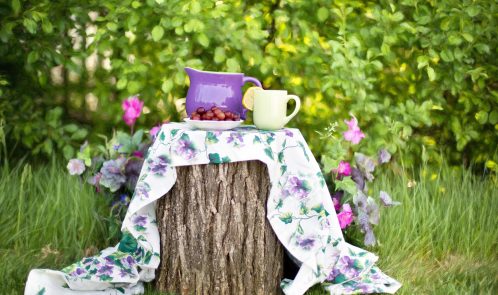Keeping costs down in a spring garden

Do you want to keep garden costs down during spring? It is no wonder, as this time of renewal and
regrowth can be a never-ending trip to the garden centre. Therefore, it is natural to want to capture
the excitement of this time in your garden, without breaking the bank. Here we offer you some tips
that will help you reduce the cost without sacrificing too many of your hopes for your yard.
Buy seeds not plants
The first saving you can make is when you choose to grow from seed. Seeds are always cheaper than
plants, and you can even end up with surplus seedlings to share and swap with friends and family.
Growing from seed takes some pre-planning and a little more time than buying plants; however, the
savings are significant enough to warrant the effort.
If you realise that you will end up with a lot of seedlings per pack of seeds, you can save even more
money by avoiding the temptation to buy lots of packets of seeds. Seeds are only viable for a short
time. Consequently, if you don’t grow them one year, they are unlikely to be available for use the
next.
Make a list of seeds you need, and then stick to this plan. Many people buy seeds like they purchase
treats at the supermarket. You need to be a little more cautious and considered than this. If you
want the option to save seeds for a future year, consider buying heirloom or heritage seeds.
Be aware that people also give away excess seedlings around springtime, so keep your eyes open.
Tomato plants are a likely candidate for such excessive seedlings, as each packet continues hundreds
of potential plants.
Cutting and dividing not buying
Another way to avoid spending money on plants is by taking cuttings from your current growth. You
can also make divisions in existing plants, which will increase the spread of the plant. This may be
the perfect approach to dealing with a gap in your yard.
If you have a good relationship with other gardeners, you could all work together to save money.
Your friend may have a plant that you can take a cutting from, and in return, they could do the same
from your garden. Alternatively, there are online forums where gardeners make swaps and some
even giving away cuttings and divided plants for free.
DIY potting mix
Potting mix is another one of those things that you can easily make yourself and so save money at
the garden centre. Using your soil and some homemade compost created from leaf mould, you can
avoid spending quite so much. Making your compost is not as hard as you would imagine. You just
need to collect organic matter from the garden and from your kitchen. Look up the vital mixing
process, where you need to combine green and brown materials for the best compost. You need a
combination of nitrogen and carbon-rich products, and many garden sites have shared such
information.
You can also make a decent homemade liquid fertiliser using weeds from your garden. Comfrey is an
excellent plant for fertilising others, and nettles, dandelions can be used too. Put the weeds into a
bucket of water and leave it until it gets to a stinky brew. When you are convinced it is as disgusting
as possible, you can strain it and dilute the mixture for use on your plants.
Seedling trays, pots, and containers
You can, of course, buy everything you need for growth from the garden centre. You can get
everything new – but you will have to commit to spending a fair amount of money. There are so
many ways you can make DIY containers, and you should save your cash. For instance, toilet roll
tubes in a tray can act as seedling trays. You then don’t need to transplant these into the garden, as
you can plant everything into the garden and the tube will disintegrate.
If you have bought plants, you will have a host of containers from the garden centre. There are lots
of creative ways of combining these pots to make something that looks decorative for your garden.
Check out those people who have used the containers to create a vertical garden up a wall.
You can also create cloches by cutting plastic bottles in half. You can then place the containers over
your individual seedlings to protect them from adverse weather. If you need to cover a larger area,
protecting it from spring icy mornings, you can use sticks and twigs from outside and use leftover
polythene sheets.



Leave a Reply